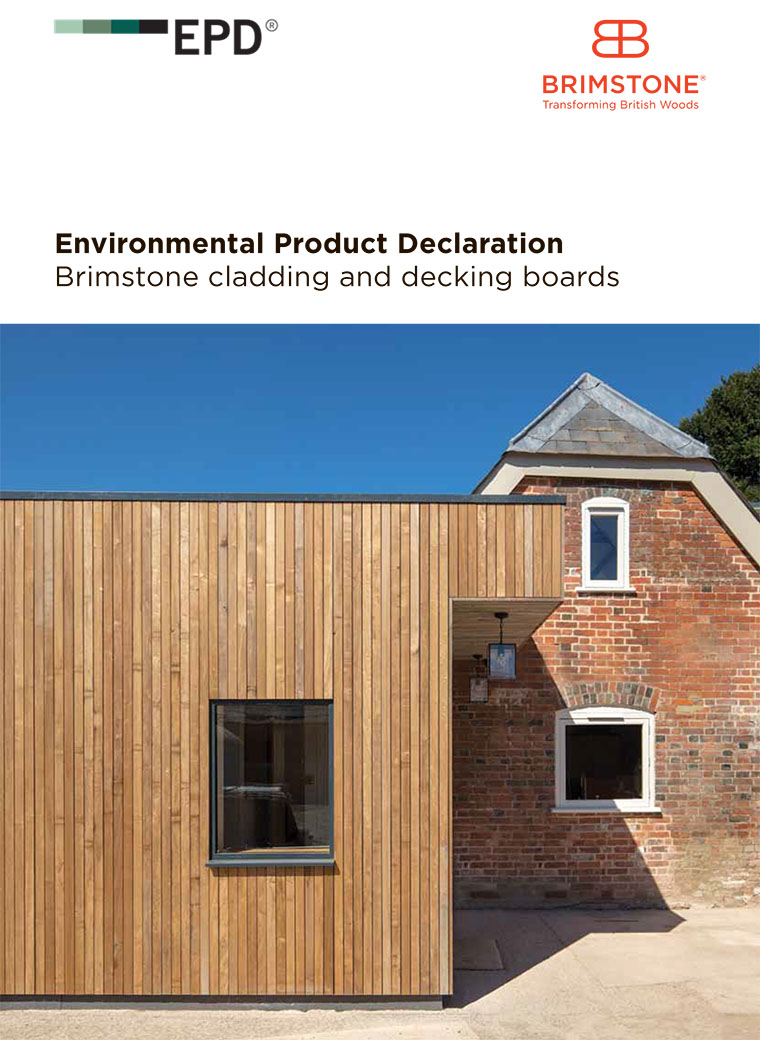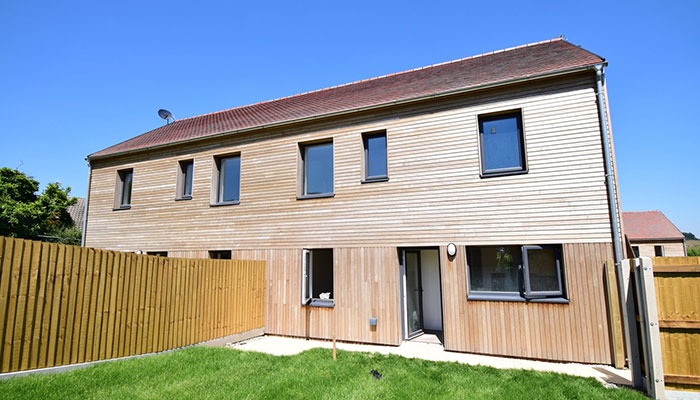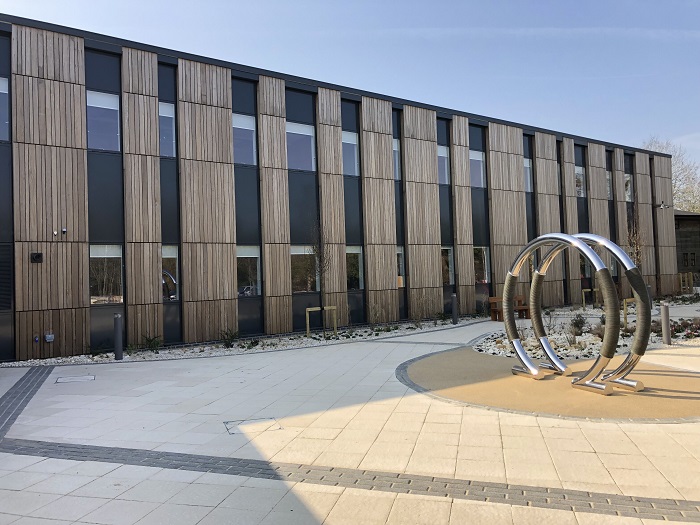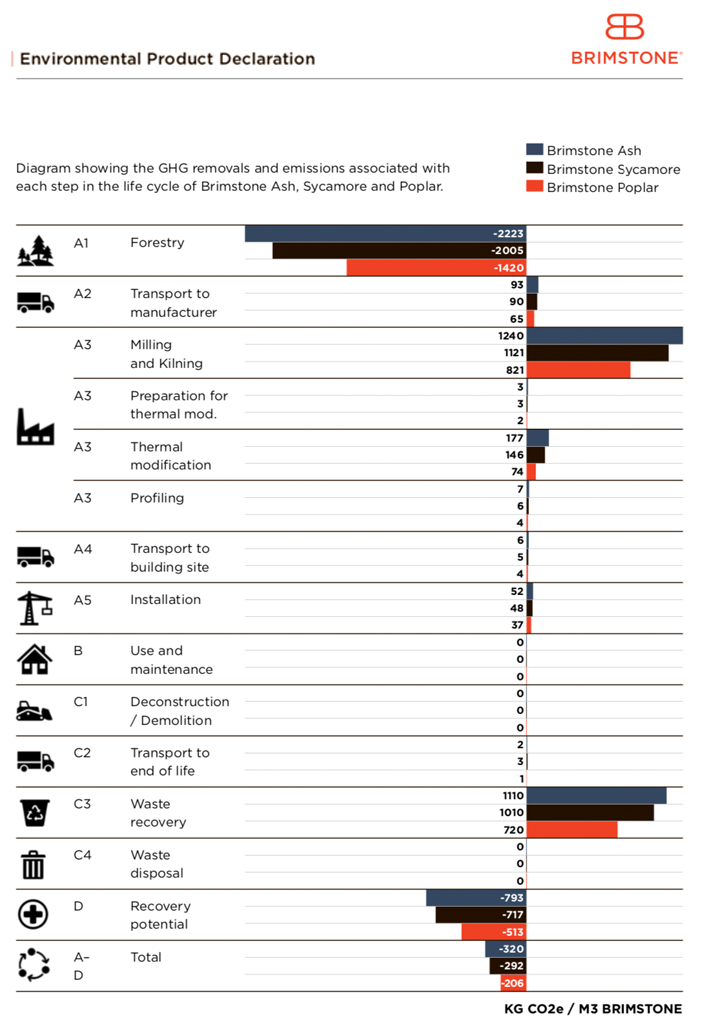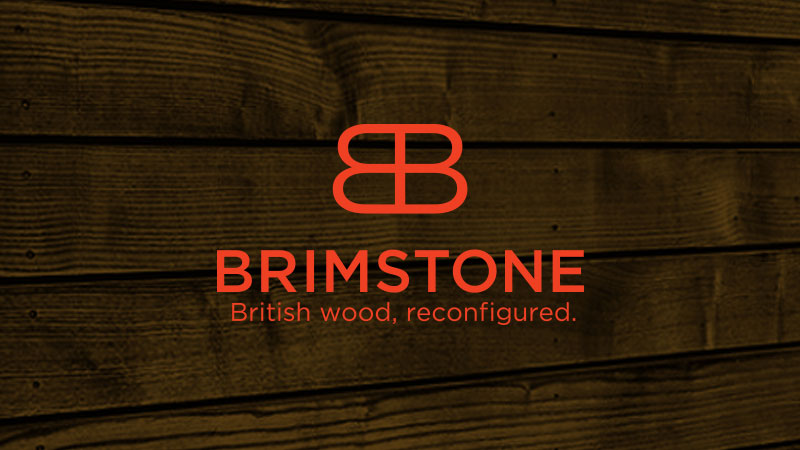October 7, 2019
Environmental Product Declaration: Brimstone Timber Cladding
In 2018 we commissioned the renowned sustainability consultants thinkstep to undertake a lifecycle analysis of our Brimstone products. After 18 months of data collection and number crunching we are proud to publish our Environmental Product Declaration, confirming that Brimstone is ‘carbon positive’.
This study was enabled by a generous innovation grant awarded to Vastern Timber by the Forestry Commission to further research into the thermal modification of British grown timber.
At Vastern we believe wholeheartedly that using locally grown timber for local markets is the most sensible and sustainable way to utilise this wonderful material. That is why we have been doing it for 120 years. As well as reducing the impact of transportation, using home grown wood financially supports the management and growth of our native woodlands. Our ongoing philosophy is to source and sell as much of our wood as possible within one hundred miles of our sawmills. This Environmental Product Declaration (EPD) now adds hard data to the argument.
Not only is using British timber sensible, it is carbon positive.
Brimstone ash cladding at Much Wenlock, a pioneering project of affordable homes built to Passivhaus standards.
What is Brimstone?
Brimstone is an innovative wood product created and produced at Vastern Timber, a long-standing British timber processor. By using a process called thermal modification, British grown hardwoods including ash, poplar and sycamore are converted into high performance materials that are ideal for high end external cladding and decking installations.
Brimstone has been extensively tested in European laboratories and has achieved Class 1 Durability, meaning that it is comparable to the most durable tropical hardwoods when used above ground.
The popularity of Brimstone is growing and it can now be found on many impressive projects across the country ranging from domestic extensions to large commercial installations such the Wood Centre for Innovation at Stansfield park in Oxford, and the affordable housing scheme at Much Wenlock in Shropshire.
The Wood Centre for Innovation at Stansfeld Park in Oxford, clad in Brimstone Poplar.
The EPD results
There is a lot of detail in the EPD document. We have distilled the most relevant numbers into one (relatively) simple table which illustrates the carbon impact at each stage of the life cycle. Greenhouse gases (GHG) are stated in kilograms per cubic metre.
Summary of EPD results for Brimstone products
Our Environmental Product Declaration is published with commentary that we hope explains the technical details for a general audience.
Positives and negatives
The term carbon positive is slightly confusing because it actually describes a negative number. During the life of the wood, i.e from when the tree sapling emerges to when the wood product is dismantled and disposed of, more carbon is absorbed than is emitted. The result is a negative number – which is positive in a world where we produce way too much Co2.
The ability of trees to absorb and hold carbon is the reason we are looking to them to help solve the climate crisis. However trees are only carbon positive over the long-term if we use the wood. By using timber in construction or furniture we are locking up the carbon and preventing it from being re-emitted into the atmosphere. Trees left to their own devices will eventually decay and all of the absorbed carbon will be lost.
Brimstone EPD
Brimstone is the first thermally modified British hardwood of its kind to have an EPD, and Vastern Timber joins leading international producers of modified timbers – like Acoya and Kebony – in undertaking this analysis.
It is well known that timber is a more environmentally friendly material than concrete, metal or plastic, but the EPD system was established to enable meaningful comparisons between products so that specifiers, contractors, developers, builders and self-builders can calculate the carbon costs of their choices.
What is an EPD?
Environmental Product Declaration is a rigorous international standard that presents transparent, verified and comparable information about the life-cycle environmental impact of products. To be comparable EPD’s must conform to the European standard EN15804 and ISO 14025, they must be prepared by a certified third party organisation and then verified by a second certified auditor. Sustainability experts Thinkstep undertook the EPD analysis for Brimstone.
The EPD reports the carbon footprint of a product through its lifecycle – from production and manufacture to end of life disposal. For timber products the lifecycle takes into account the growth of the tree.
The system is internationally standardised, and increasingly important for architects and specifiers when assessing the environmental impact of projects.
We know that no standard is perfect. Some argue that it’s not fair to count carbon sequestration (absorption) during tree growth in product lifecycle analysis, and there are legitimate debates around about ‘counting what really counts’ when it comes to environmental standards. For this reason we have enhanced the presentation of the data so that people can select the data as they see fit.
At Vastern Timber we think it’s critical that products are properly assessed for their environmental impact. The Environmental Product Declaration standard is hugely useful for specifiers and developers in understanding how product choices can help address the environmental impact of the built environment.
But what about the carbon cost of thermal modification?
We are often asked if the thermal modification process is energy intensive, and it was this question that spurred us on to undertake the study in the first place.
To make Brimstone we use kilns that reach 210 degrees and this obviously has a carbon footprint, but as the EPD demonstrates it is relatively small. Most of the drying is achieved naturally outside and then with biomass powered kilns. The burst of heat needed to achieve modification, is created by burning gas, but this heat is only required for a short period and the impact is low.
Obviously carbon is not the only concern out there. It seems that every week we are introduced to a new chemical that we have never heard of that is damaging our environment, or a polluting side effect of so-called green solutions. The beauty of thermal modification is that it involves nothing but heat, no chemicals or other nasties.
Once produced, thermally modified wood is just wood and at the end of its life, it can be disposed of in the same way as raw wood. Unlike most raw wood however, thermally modified wood will last a long time outside and will perform well, meaning that it will be in use – and locking up carbon – for longer.
The Brimstone story
Brimstone wood was born out of the need to find ways to reverse the decline in the use of British-grown hardwoods and the associated decline in woodland management. The logical solution is to stimulate demand for woodland products. In 2015 a major feasibility study found that: ‘Thermal modification represents the perfect opportunity to dramatically increase the use of white hardwoods and transform the management of British broadleaf woodlands.’
The publication of Brimstone EPD in 2019 is a milestone in the product history, and a proud moment for the team at Vastern Timber.
Visit the Brimstone website for more information or contact Vastern Timber to discuss your project.


